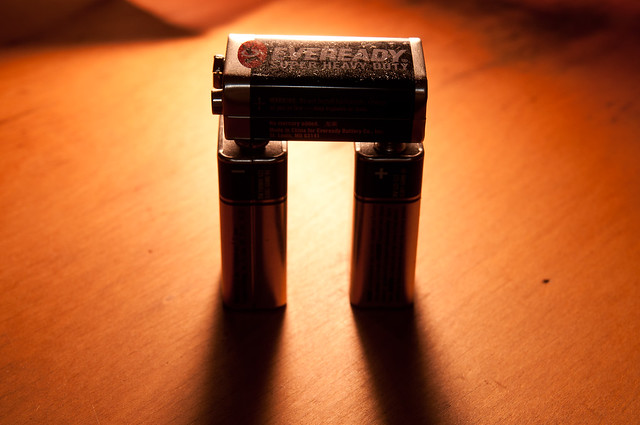Best 21700 Batteries-Comparison, Life Cycle and Characteristics
Jun 18, 2020 Pageview:3750
Lithium-ion 21700 batteries are 3.6-3.7 volts batteries that are very popular and in demand for the devices that need the batteries that have high drain battery capacity, constant voltage, and low self-discharge rate. Also, the batteries have a good number of charging and discharging cycles.
21700 batteries, the lithium rechargeable batteries have so many different versions that are different from one another in terms of battery capacity, pulse rate and drain current, charging current, battery terminals, protective electrons, so and so forth.
Commonly, people pick 21700 batteries for high drain devices that require battery packs of high capacity having high power of flashlights, electric bikes, scooters, and other vehicles, cordless tools, drones, high-end toys, etc.
The name of the battery is also telling its dimensions that are 21 x 70 mm (0.827 x 2.756 inches) diameter and length, respectively. The dimensions can be slightly different depending upon the model, as the button top batteries maybe a little longer. These variations are so small that is not creating any problem.
Which battery is better, 20700, or 21700?
All lithium-ion batteries are named after their size and dimensions. Let’s consider 18650 battery, the diameter of this battery is 18 mm and the length is 65 mm, similarly, 20700 battery has a diameter of 20 mm and length 70 mm. You now have an idea of 21700 battery, which is slightly longer than 20700, having a diameter of 21 mm and length 70mm. Noting down the dimensions, both 20700 and 21700 batteries are quite similar. A little more you should know is the difference in their performance, although, they both are more likely to go hand in hand together.
How long does a 21700-battery last?
Like every other device and product, batteries also need safe use, so that they can last longer and become harmless to your devices. The recharging number of 21700 batteries is between 300 to 500 times unless they lose functioning properly. These batteries can last from 3 to 5 years.
Again, remember each battery is different from the other. If the battery is used for vaping, the amount of time a battery lasts per charge and the number of cycles helps in determining the total life cycle of a battery.
What are the characteristics of the best 21700 battery?
Picking 21700 batteries is the easy choice as these batteries lie among the top batteries in vaping and their performance is much better from other batteries. The characteristics of this battery will help you understand more about why it is among the top choices.
Capacity:
The capacity of 21700 batteries is in the range of 3000 to 5000 mAh depend on the built-in model, it’s design, and chemistry.
Charging and discharging currents:
The charging and discharging currents of 21700 batteries depend on the high or low-drain power of the battery. The high drain power may provide the current up to 30+ amps without giving any harm to the lifecycle of the battery. On the other hand, low drain power 21700 batteries having a maximum (in most cases) discharging power of 5 amps. The capacity range of high drain 21700 batteries is between 3000 to 4000 mAh while low drain 21700 batteries have a capacity of 5000+ mAh.
Protected 21700 batteries:
As the lithium-ion rechargeable batteries need extra care because of the sensitivity to charging and discharging currents, temperature, and voltage, some of the 21700 batteries have built-in protective electrons (Battery Management System -?BMS) that help in monitoring battery parameters and features like charging and discharging current, temperature, voltage and if the protection is required by the battery in order to shut off until its condition is changed-cooling down of the battery, no more short circuit, etc.
Note: You must use the dedicated lithium battery charger to overcome the sensitivity of these batteries.
Battery Management System –?BMS is having some space inside the battery that is slightly drowning the capacity of such batteries.
Flat or button positive (top) battery terminal:
The 21700 batteries come with two versions of the positive (top) terminal: flat top and button top.
Some devices need both battery types in their jack to operate but you should check the documentation of your device first to select the right battery type for your device.
The button top battery types of 21700 batteries may be slightly longer than the standard size that comes with the length of 70mm (the length of battery’s body is measured but the button top adds 1 to 2 mm more in the size). Though this slight change in size is not a big problem but, in some devices, it may be.
21700 Battery Chemistry
21700 batteries also have a label on it which includes abbreviations like IMR, INR, IFR, or ICR. These abbreviations are the description of battery chemistry.
IMR 21700 Batteries:
These batteries have LiMn204?(Lithium Manganese Oxide) chemistry. The nominal voltage is between 3.6 to 3.7 V per cell with maximum charging recommendation up to 4.2 V. The capacity of IMR batteries is relatively small but they possess the capability of delivering large currents.
INR 21700 Batteries:
These batteries have LiNiMnCoO2?(Lithium Manganese Nickel) chemistry. Just like IMR batteries, they have a small capacity with large current delivery.
IFR 21700 Batteries:
These batteries have LiFePO4?(Lithium Iron Phosphate) chemistry. The nominal voltage of IFR batteries is between 3.2 to 3.3 V per cell with maximum charging recommendation of 3.5 to 3.6 V. They have medium capacity but are safest to use in electric bikes and scooters and in power tools without any protection.
ICR 21700 Batteries:
These batteries have LiCoO2?(Lithium Cobalt Oxide) chemistry. The nominal voltage is between 3.6 to 3.7 V per cell with maximum charging recommendation of 4.2 V. The ICR batteries have commonly higher capacities but their current delivery is lower.
Leave Message
Hottest Categories
-
Hottest Industry News
-
Latest Industry News











